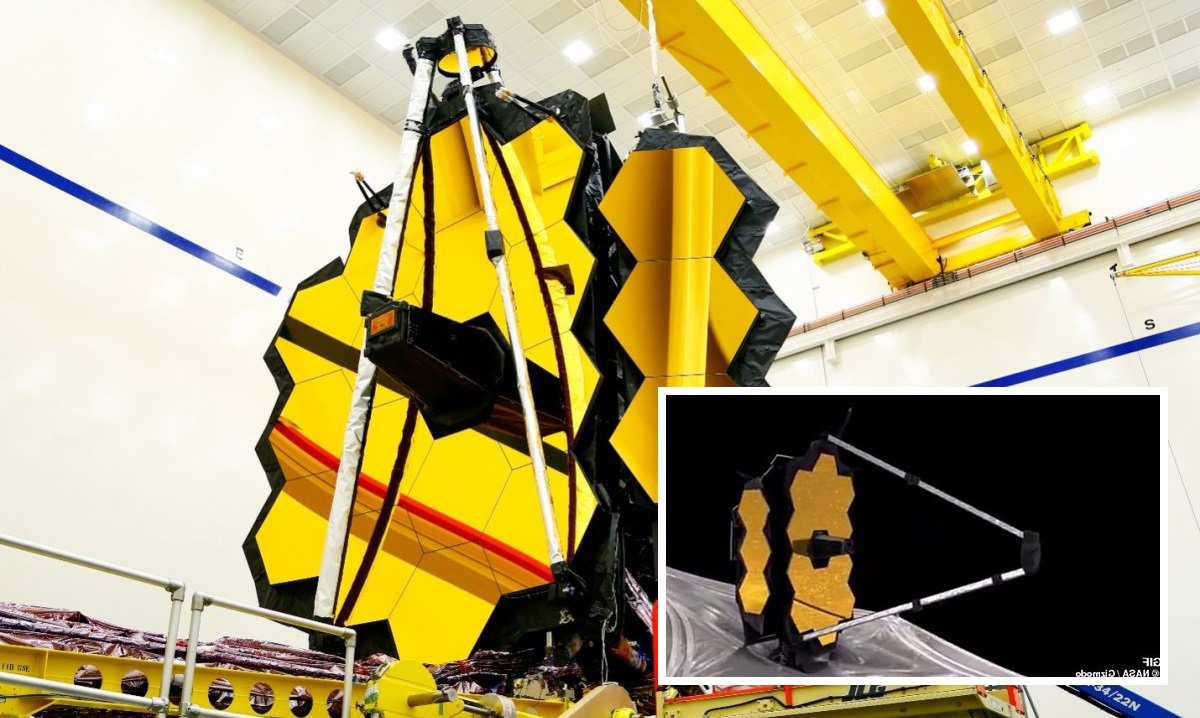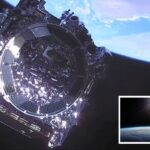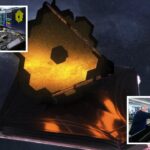The launch of the James Webb Space Telescope, the world’s most powerful space telescope, was just the start of this space-based observatory. It is now more than 70% of the way to its final orbit around the sun, having departed Earth’s atmosphere and gone over 250,000 miles away from our planet (via NASA).
However, the telescope must do more than merely travel. Many of the observatory’s components must be huge in order for it to capture the most precise measurements possible, yet space within a rocket is limited. The telescope had to unroll itself into its final shape after it was launched into orbit.
The observatory recently completed a major milestone by completing the deployment of its five-layer sunshield, which is the size of a tennis court and required tensioning. Now that its secondary mirror and heat radiator are in place, it can move on to the next great challenge: unfolding its amazing hexagonal main mirror.
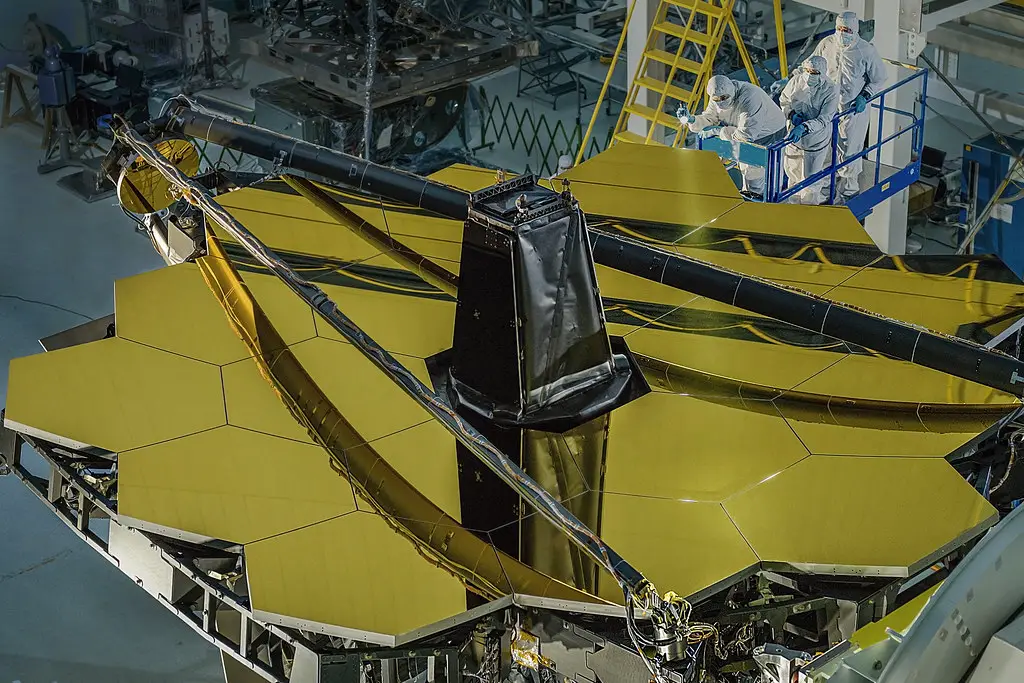
Engineers started the process of unfolding the main mirror on Friday, January 7. The mirror is one of the telescope’s most visually remarkable components, consisting of 18 hexagonal, gold-plated pieces. The main mirror must be big since it determines how much light the telescope can detect, making it more precise (via NASA). James Webb’s mirror is the biggest ever flown into space, measuring 6.5 meters (21 feet). When compared to James Webb’s predecessor, the Hubble Space Telescope, which had a 2.4-meter (7.8-foot) mirror, this larger mirror will allow the telescope to look deeper into space.
Engineers could not simply replicate Hubble’s 6.5-meter (21-foot) mirror since it would be too massive and heavy to launch. Instead, they constructed the James Webb mirror out of beryllium pieces, which are both light and robust. To fit inside the rocket, these pieces fold in on themselves, and now it is time for them to unfurl into their final shape.
According to NASA, one of the two major mirror wings, which are the side panels that keep the mirror in place, has been deployed thus far. The port side mirror wing was deployed at 8:36 a.m. ET and finished at 2:11 p.m. ET.
The deployment of the starboard wing, which is scheduled for this weekend, is the next step. After that, the telescope should be completely deployed and ready to begin its voyage to its orbit.
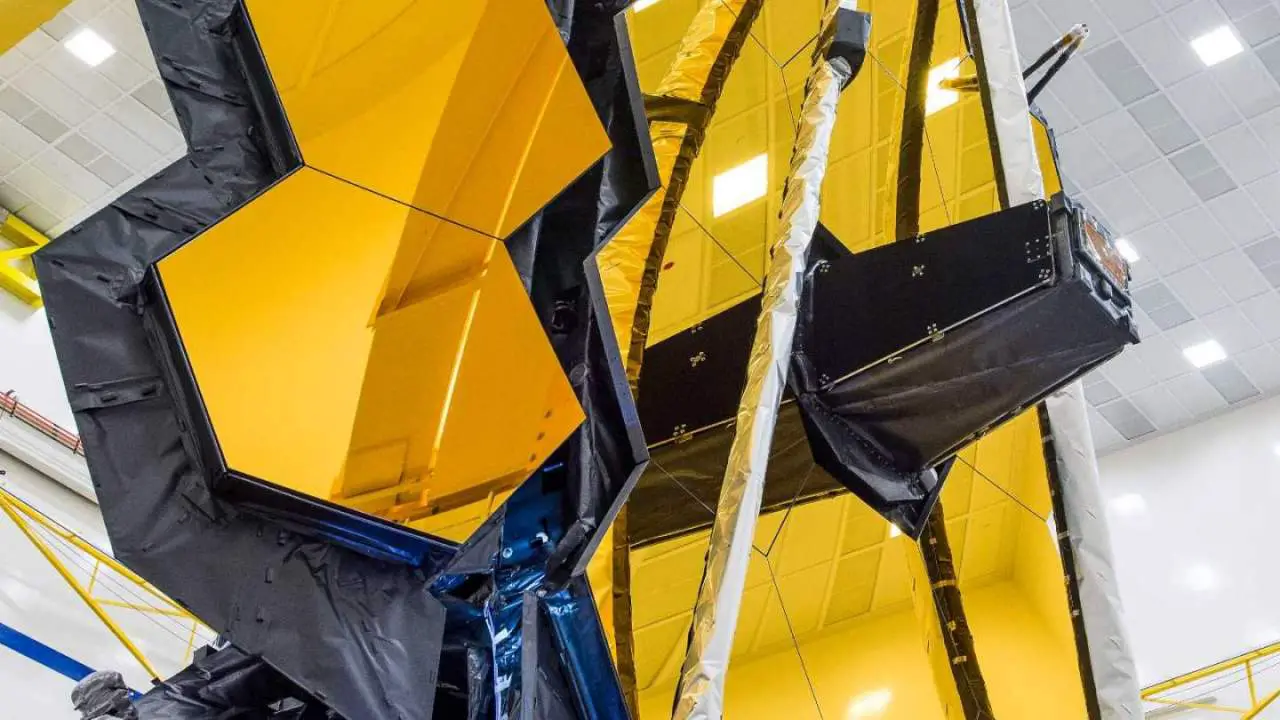
How the James Webb Space Telescope is so different from Hubble
As the James Webb telescope nears the completion of a complicated process of self-unfurling in space, scientists are exhaling a sigh of relief. The Hubble Space Telescope’s successor, the Kepler Space Telescope, is an entirely different piece of equipment.
Apart from the fact that both telescopes employ curved mirrors to collect light from the cosmos, there are no other similarities. Webb’s main mirror is 6.5 meters in diameter and is made up of 18 gold-coated hexagonal panels that fit together like a mosaic.
Hubble relies on a single 2.4–meter solid glass mirror. Webb has 6.25 times the surface area to collect light due to his size advantage. It is the world’s biggest space telescope, and size does important in astronomy.
It will be able to detect radiation from incredibly distant objects all the way back to the beginning of the universe since the light it will catch is infrared, which is effectively heat.
This huge telescope is being unpacked
Because of its size, the telescope could not be loaded into the cargo compartment of a space shuttle and sent into orbit as a single unit, as Hubble did. It had to be folded up like a mythical transformer to fit inside the nosecone of an Ariane 5 rocket and then unpack itself in space, which caused the scientists and engineers a great deal of concern.
There is no space for errors, and there is no way for astronauts to fix anything if anything goes wrong. It needs to be perfect from the start.
This massive, ultra-sensitive sensor needed to be as light as possible while yet being sturdy enough to endure the vibrations and G-forces of a rocket launch.
Once in orbit, the procedure required 50 main deployments and 344 “single-point failure” devices like as latches, hinges, motors, bearings, gears, cables, and pulleys, according to the scientists. They must all function flawlessly.
So far, everything has gone well
This is it: we’ve just wrapped up one of the most challenging steps of our journey to #UnfoldTheUniverse.
With all five layers of sunshield tensioning complete, about 75% of our 344 single-point failures have been retired! pic.twitter.com/P9jJhu7bJX
— NASA Webb Telescope (@NASAWebb) January 4, 2022
That series of events has so far gone according to plan since it was started on Christmas Day 2021. In fact, the launch was so accurate that the telescope will have enough maneuver fuel left over to function for longer than the predicted 10 years.
The most complicated and nerve-wracking step was the construction of a massive solar screen that would stop radiation from the sun, moon, and Earth from overwhelming the telescope’s ultra-sensitive equipment.
The shield is constructed of five layers of thin aluminized plastic that had to be meticulously unfolded and stretched taut. Consider folding a tennis court-sized sheet of plastic food wrap into a container, then taking it out in the chilly vacuum of space without ripping it.
The technology has been tried several times on Earth, but gravity is always present on the earth. The scientists had to trust that it would operate just as effectively in space’s zero gravity. That scenario, thankfully, went off without a hitch.
The last step is to put the mirror together. The primary mirror, which is enormous, and a smaller secondary mirror, which is held out in front of the focal point by three long booms, are the two. To concentrate the light with unparalleled precision and sensitivity, all of these parts must come together perfectly.
Hubble has taught us a lot
The James Webb telescope is built to prevent the same humiliating issue that the Hubble Space Telescope encountered shortly after its launch in 1990. The initial photos were distorted due to a defect in the main mirror, which caused it to have the incorrect shape for appropriate focus.
Thankfully, Hubble was built with modular components that could be changed so that it could be repaired by astronauts. A set of corrective optics, fitted by astronauts, was meant to cancel out the imperfection and restore clear eyesight. Over the years, the telescope has been repaired five times, with its equipment upgraded to the point that it is now more competent than when it was initially erected.
That is not an option for Webb. Its ultimate orbit, 1.5 million kilometers from Earth on the far side of the moon, is too far away for humans to reach.
The 18 segments of the mirror include actuators that can move them into perfect alignment and even modify the form of each individual segment to guarantee it has the appropriate curvature with an accuracy of 1/10,000th of human hair.
The commitment of the scientists and designers who constructed and tested the telescope before it was launched is a monument to the fact that this complicated series of events have gone off without a hitch so far.
Having sharper eyes on the cosmos is a good thing.
Hubble transformed the face of astronomy because of its clarity of vision well above the turbulence of the Earth’s atmosphere, not because it was the biggest; in fact, it is modest by terrestrial standards.
This will be taken to the next level by the James Webb Space Telescope. While ancient galaxies at the frontier of the observable universe and planets circling other stars are predicted, the most fascinating possibilities are the ones no one imagined.
Bigger and better astronomical tools have opened our eyes to the marvels of the cosmos since Galileo pointed the first telescope to the sky more than 400 years ago. Who knows what marvels may be unveiled through Webb’s eyes in the coming years.

